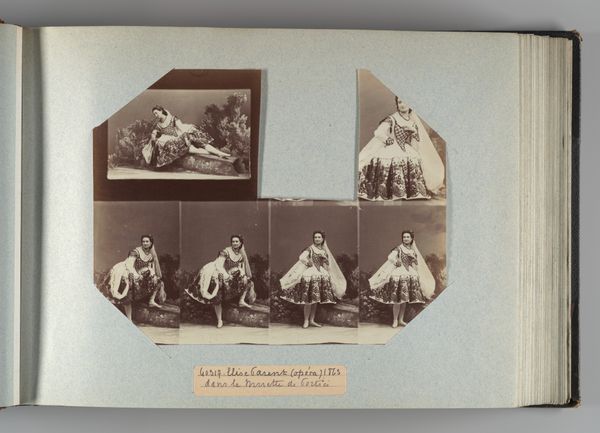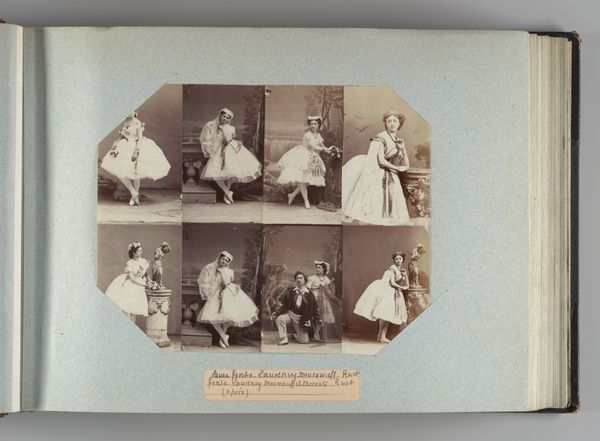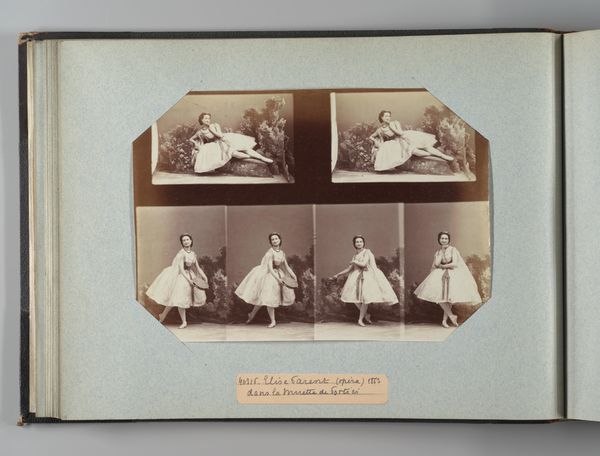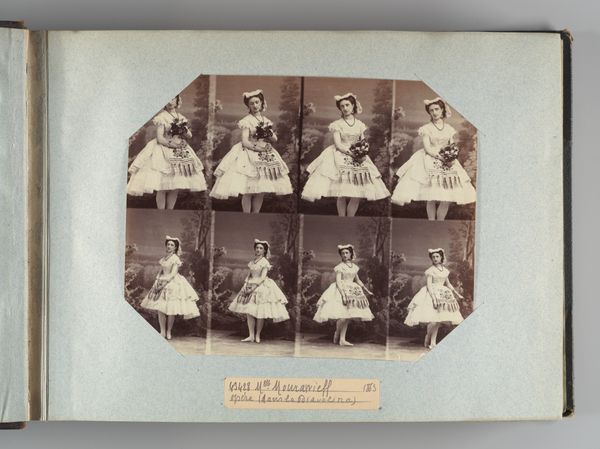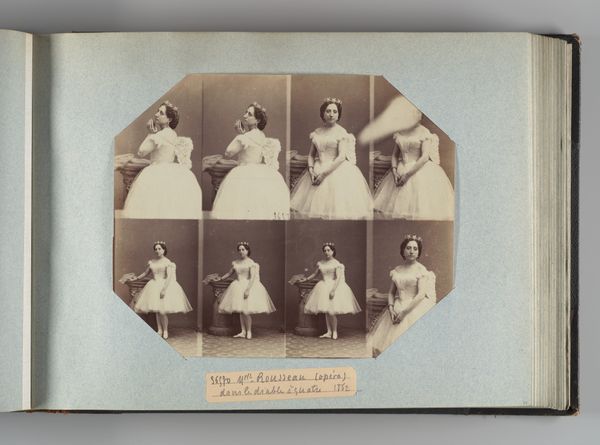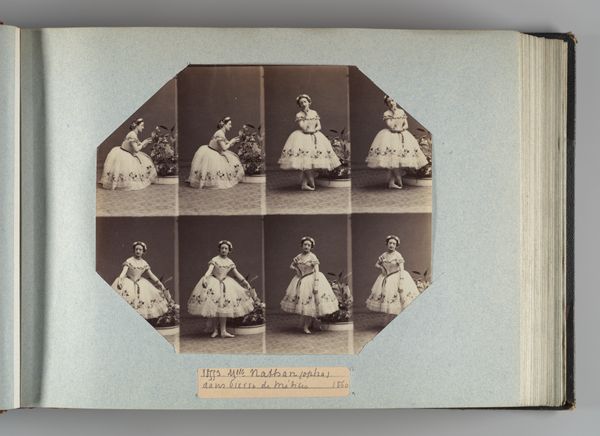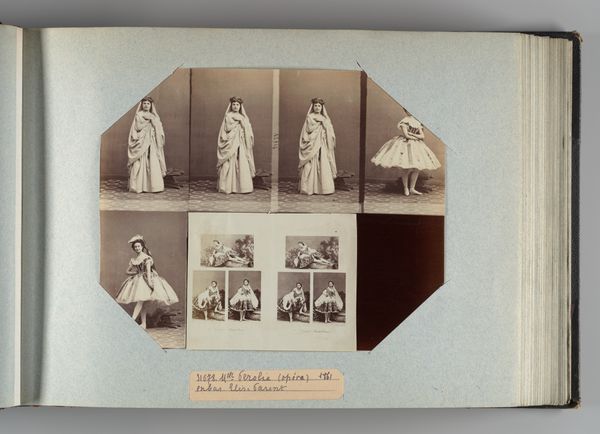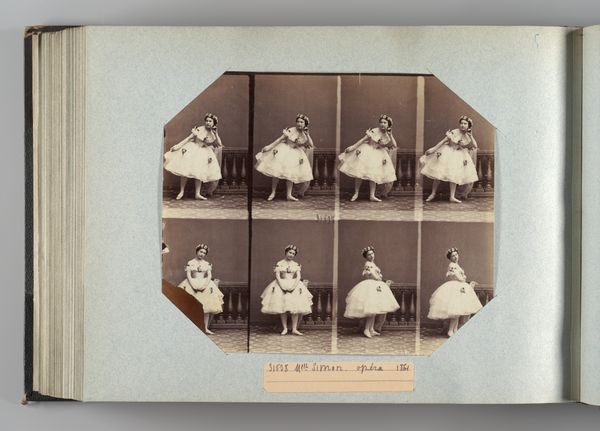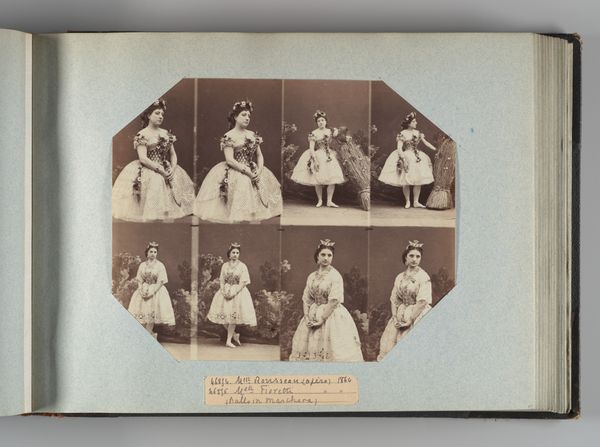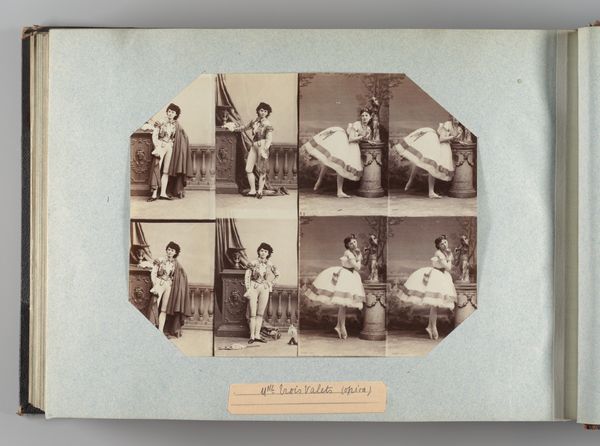![Mlle Rousseau dans la Muette de Portici [?] by André-Adolphe-Eugène Disdéri](/_next/image?url=https%3A%2F%2Fd2w8kbdekdi1gv.cloudfront.net%2FeyJidWNrZXQiOiAiYXJ0ZXJhLWltYWdlcy1idWNrZXQiLCAia2V5IjogImFydHdvcmtzLzQxMWZmMTY1LTBhZTUtNGJjMC05MDQ2LWVkNGYyNDc0YmJlZS80MTFmZjE2NS0wYWU1LTRiYzAtOTA0Ni1lZDRmMjQ3NGJiZWVfZnVsbC5qcGciLCAiZWRpdHMiOiB7InJlc2l6ZSI6IHsid2lkdGgiOiAxOTIwLCAiaGVpZ2h0IjogMTkyMCwgImZpdCI6ICJpbnNpZGUifX19&w=3840&q=75)
Mlle Rousseau dans la Muette de Portici [?] 1863
0:00
0:00
Dimensions: Image: 7 3/8 × 9 1/4 in. (18.8 × 23.5 cm) Album page: 10 3/8 × 13 3/4 in. (26.3 × 35 cm)
Copyright: Public Domain
Editor: This is "Mlle Rousseau dans la Muette de Portici [?]", an albumen print collage made around 1863 by André-Adolphe-Eugène Disdéri. The arrangement of photos makes me think about the beginnings of cinema. What kind of statement do you think Disdéri was trying to make here? Curator: Think of this image as a fragmented echo of Romanticism's fervor. “La Muette de Portici,” an opera about revolution, pulses beneath these images. Rousseau, a dancer, embodies the opera’s themes through her multiple photographic selves. Consider, too, that dance, then as now, relies on codified gestures, a kind of symbolic language. Editor: So, you are saying the dancer herself represents symbolic gestures? Curator: Precisely! Her poses, frozen yet sequential, aren't just aesthetic choices. They whisper of rebellion, freedom, and the silent strength of the oppressed – themes ignited by the opera and mirrored in the very act of collage. The photographic medium itself was revolutionary, capable of capturing and disseminating images widely. Do you see a connection between the dance, the opera and this medium? Editor: Absolutely. The layering effect of the photographs, how it shows multiple views in quick succession, does add to the idea of unfolding narrative. It really emphasizes movement. Curator: It’s a cultural memory preserved, isn't it? Disdéri uses not just photography, but its then-novel potential for reproduction and dissemination to make that memory more durable. Editor: It is interesting to think about how the meaning of an artwork transforms when media and artistic movements combine and change over time! Curator: Indeed. We’ve barely scratched the surface here. These images speak volumes when you begin to decode their language.
Comments
No comments
Be the first to comment and join the conversation on the ultimate creative platform.
